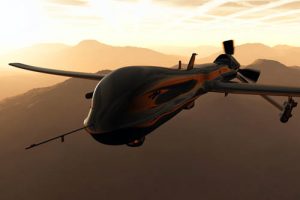Researchers in the UK have been working on a tracking system that is based on eye-safe lasers to enable unmanned aerial vehicles (UAV), aircraft and satellites to transmit data to ground stations quickly, security and efficiently. The concept has been tested successfully in-flight.
The system, which aims a laser designed with a custom lens that provides a 1550 nm wavelength, from the ground toward the targeted aircraft as a specially designed reflector captures the beam, modifies it with the data being transmitted then redirects the data back to the ground. Once the data is returned to the ground system, it is decoded and read.
The system they are working is called Hyperion, and was developed as an alternative to radio frequency data transmission. The researchers said that Hyperion could allow UAVs that are engaged in disaster monitoring, search and rescue, humanitarian missions or surveying to transmit detailed images more rapidly back to the ground system.
The Hyperion system also makes it possible for airplanes to offload their technical and performance data to ground crews during their final approach to an airport. This data download could lead to quicker maintenance procedures and quicker turnaround times for flights.
Using the lasers also helps eliminate the possibility from outside radio interference. RF communications are vulnerable to being intercepted and jammed by outside forces. Researchers believe it is crucial to develop alternatives to radio communications because of the large volumes of data that are being transmitted from the skies and the anticipated increases in those transmissions.